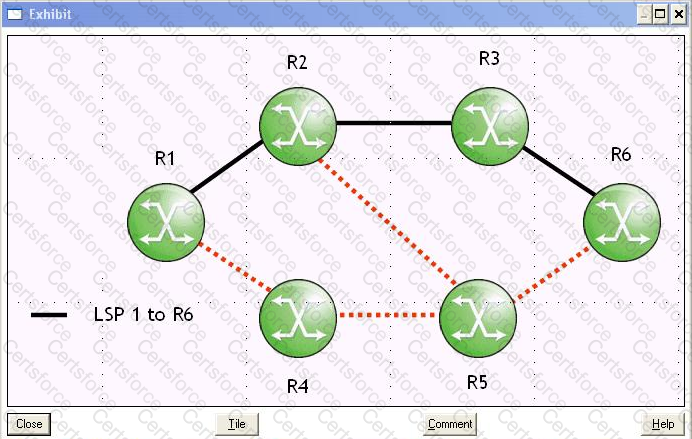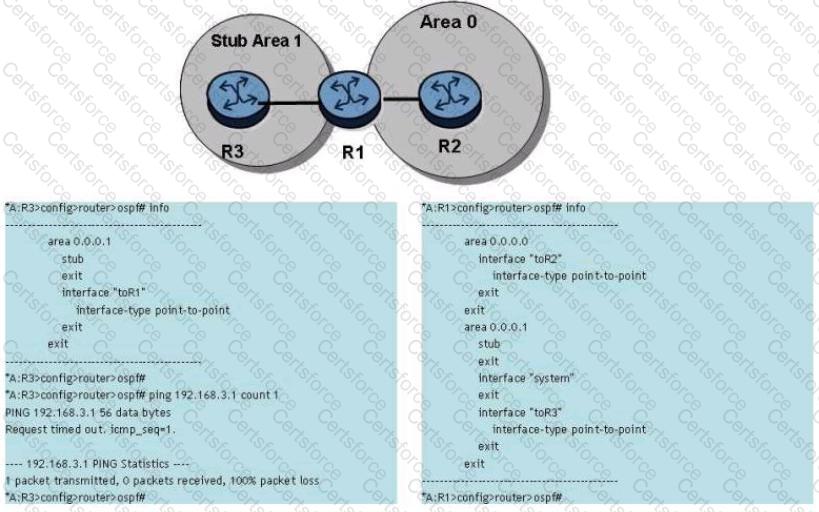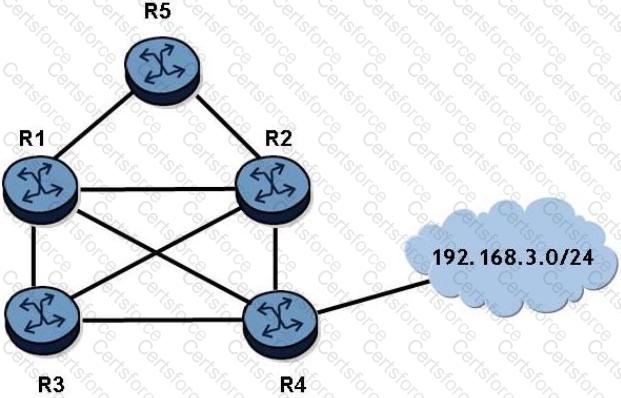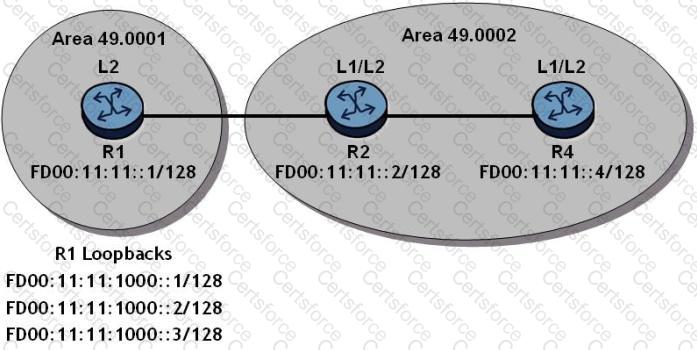Click on the exhibit.

The routers have an established IS-IS L2 adjacency on which IPv4 system addresses are exchanged. An operator successfully configures multi-topology IS-IS routing so that the IPv6 system addresses are also exchanged between routers.
After IPv6 has been configured, which of the following is TRUE?
What is the common usage of the MPLS EXP bits?
Which of the following are functions of the MPLS control plane in a router? (Choose two)
Which of the following about IS-IS is FALSE?
The destination IP address of a received unlabeled packet is successfully matched in the FIB.
Which of the following is FALSE?
Why does IPv6 not use ARP?
Which of the following statements best describe MPLS fast reroute characteristics? (Choose two)
Click on the exhibit button below.

LSP 1's link between routers R3 and R6 has failed, and the RESV state at router R3 has timed out. Which of the following actions will router R3 initiate?
Click on the exhibit.

Based on the topology shown and the route tables of routers R3 and R4, which of the following is correct?
Click on the exhibit.

192.168.3.1 is a loopback interface on router R2 and is distributed to OSPF area 0, but the ping fails from router R3. Which of the following is a possible solution to the problem?
The following are statements about fields in the Hello packet that must match in order to form an OSPF adjacency. Which statement is correct?
Click on the exhibit.

OSPF is operational on all links in the network diagram, all links are the same cost, and all routers are configured with an ECMP value of 4. Router R4 advertises the prefix 192.168.3.0/24 into OSPF.
How many entries for prefix 192.168.3.0/24 will be in router R5's routing table?
An IS-IS router receives a CSNP that references an older LSP than the one in its database. What action is taken?
Which of the following statements is true of an established LDP session?
How have Traffic Engineering extensions to IS-IS been implemented?
Click on the exhibit.

Router R1 distributes its globally routed address and its loopbacks into IS-IS. Routers R2 and R4 have their globally routed addresses in IS-IS.
How many routes will router R4 have in its IPv6 route table?
Which of the following concerning OSPFv3 is TRUE?
Click on the exhibit.

What type of OSPFv3 LSA is shown?
When IS-IS is electing a DIS, what is used as the tie breaker on an Alcatel-Lucent 7750 SR, if the priorities are the same?
Which of the following conditions must a router meet for an LSP path's RSVP session to exist? Choose two answers